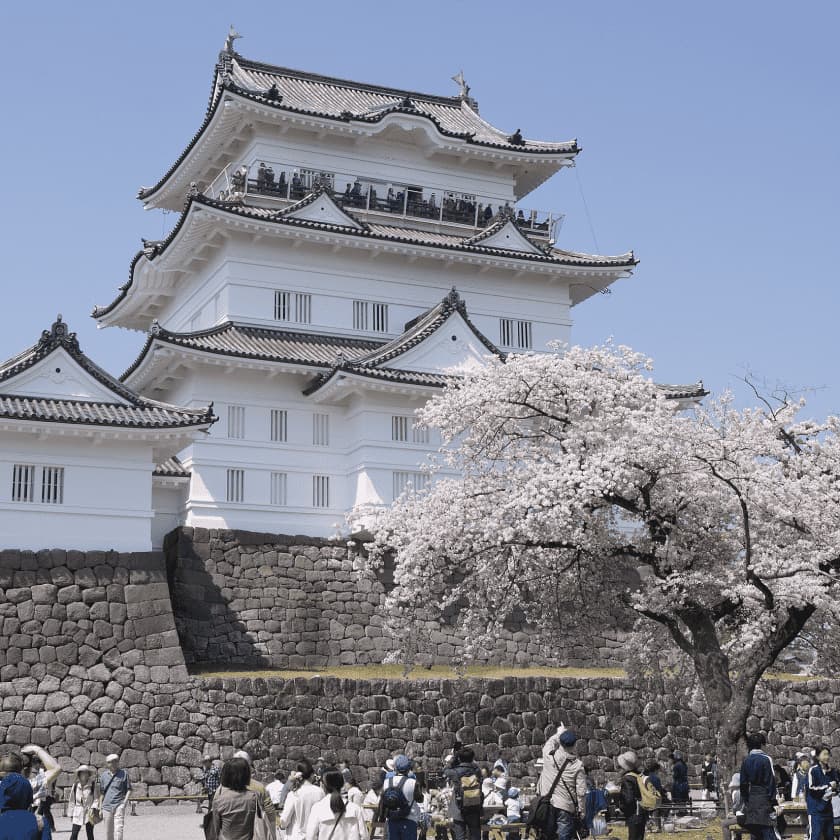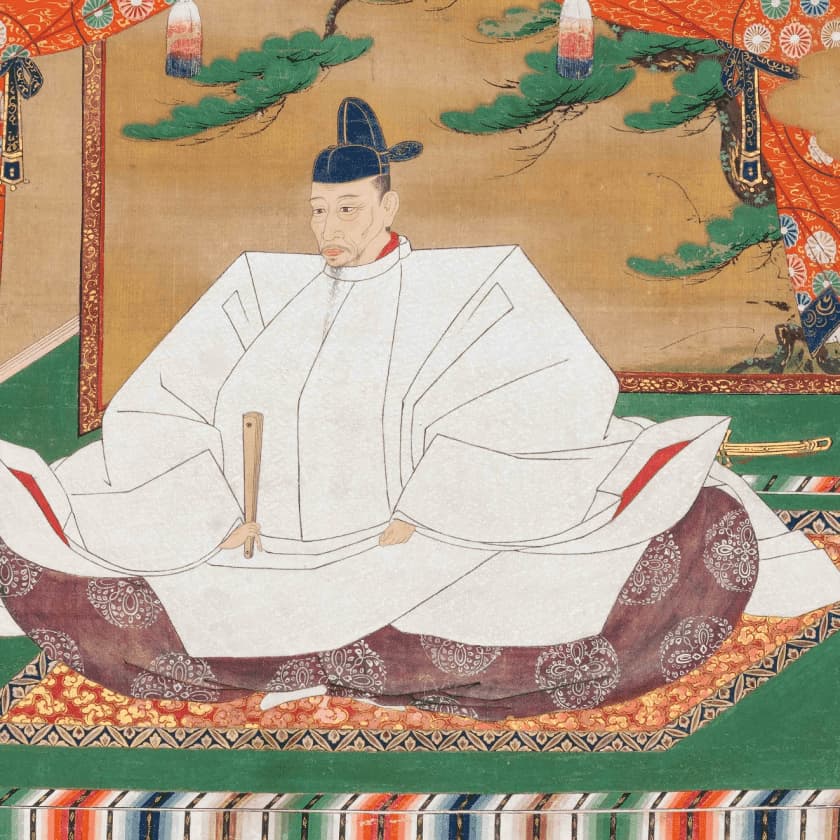unification of japan
01 / 05
toyotomi hideyoshi
01 / 05
unification of japan
01 / 05
toyotomi hideyoshi
01 / 05
豊臣秀吉
unification of japan
01 / 05
toyotomi hideyoshi
01 / 05
unification of japan
01 / 05
toyotomi hideyoshi
01 / 05
biodata
[ Crest of the Toyotomi Clan ]
Position
Toyotomi clan leader
timeline
1537
1598
capital
osaka castle
control
entire Japanese archipelago
power
13 yrs in power
legacy
Economic Reforms
02 / 05
toyotomi hideyoshi
03 / 05
toyotomi Hideyoshi ended the Sengoku period, establishing the foundation for a stable and centralized governement which will later shape the edo period
Toyotomi Hideyoshi was a peasant who rose to success as Oda Nobunaga's retainer - an incredible feat for someone without elite family lineage at that time. While he was a charismatic and respected leader, he failed to leave behind a stable clan for proper succession of power
introduction
03 / 05
capital / base
kyoto
gifu
shiga
toyama
aichi
fukui
mie
nara
hyogo
wakayama
tokushima
hiroshima
okayama
tottori
osaka
Osaka Castle was constructed by Hideyoshi and stood as a monumental fortress
Strategically located in proximity with Kyoto and its surrounding provinces, Hideyoshi's choice to base in Osaka is motivated by communication convenience, political symbolism, and economic importance. He wanted it to be the new central capital of Japan.
Strategically located in proximity with Kyoto and its surrounding provinces, Hideyoshi's choice to base in Osaka is motivated by communication convenience, political symbolism, and economic importance. He wanted it to be the new central capital of Japan.
osaka castle
oda nobunaga
04 / 05
toyotomi hideyoshi
04 / 05
battle
battle
battle
strategy
Toyotomi Hideyoshi's military strategies were multifaceted and strategic. Through adept diplomatic maneuvers, he formed alliances to consolidate power
Siege Warfare Expertise
Hideyoshi was skilled in employing innovative tactics and technologies to besiege and capture enemy fortresses and strongholds. His mastery of siege techniques allowed him to overcome well-defended positions
Siege Warfare Expertise
Hideyoshi was skilled in employing innovative tactics and technologies to besiege and capture enemy fortresses and strongholds. His mastery of siege techniques allowed him to overcome well-defended positions
Siege Warfare Expertise
Hideyoshi was skilled in employing innovative tactics and technologies to besiege and capture enemy fortresses and strongholds. His mastery of siege techniques allowed him to overcome well-defended positions
Rapid Mobilization
Hideyoshi emphasized swift mobilization of his forces, enabling him to respond quickly to threats and exploit opportunities on the battlefield. His ability to rapidly deploy troops allowed for strategic flexibility and surprise attacks
Rapid Mobilization
Hideyoshi emphasized swift mobilization of his forces, enabling him to respond quickly to threats and exploit opportunities on the battlefield. His ability to rapidly deploy troops allowed for strategic flexibility and surprise attacks
Rapid Mobilization
Hideyoshi emphasized swift mobilization of his forces, enabling him to respond quickly to threats and exploit opportunities on the battlefield. His ability to rapidly deploy troops allowed for strategic flexibility and surprise attacks
Naval Supremacy
Hideyoshi recognized the strategic importance of naval power and invested in building a formidable navy. By controlling sea routes and coastal regions, he secured vital supply lines
Naval Supremacy
Hideyoshi recognized the strategic importance of naval power and invested in building a formidable navy. By controlling sea routes and coastal regions, he secured vital supply lines
Naval Supremacy
Hideyoshi recognized the strategic importance of naval power and invested in building a formidable navy. By controlling sea routes and coastal regions, he secured vital supply lines
Economic Mobilization
Hideyoshi implemented extensive economic reforms to support his military campaigns, including land redistribution, taxation reforms, and policies to promote trade and commerce
Economic Mobilization
Hideyoshi implemented extensive economic reforms to support his military campaigns, including land redistribution, taxation reforms, and policies to promote trade and commerce
Economic Mobilization
Hideyoshi implemented extensive economic reforms to support his military campaigns, including land redistribution, taxation reforms, and policies to promote trade and commerce
battle strategy
04 / 05
toyotomi hideyoshi
04 / 05
toyotomi hideyoshi
05 / 05
pivotal moments
05 / 05
pivotal
pivotal
pivotal
moments
From his remarkable rise from humble origins to his military triumphs, ambitious construction projects, and eventual decline, these pivotal moments illustrate Hideyoshi's complex legacy as a unifier of Japan and a patron of the arts.
1582
Battle of Yamazaki
Following the assassination of Oda Nobunaga, Toyotomi Hideyoshi's victory at the Battle of Yamazaki solidified his position as a formidable warlord, marking the beginning of his quest for dominance

Battle of Yamazaki by Sadahide

The Battle of Yamazaki took place on Mt. Tenno
1582
Battle of Yamazaki
Following the assassination of Oda Nobunaga, Toyotomi Hideyoshi's victory at the Battle of Yamazaki solidified his position as a formidable warlord, marking the beginning of his quest for dominance

Battle of Yamazaki by Sadahide

The Battle of Yamazaki took place on Mt. Tenno
1582
Battle of Yamazaki
Following the assassination of Oda Nobunaga, Toyotomi Hideyoshi's victory at the Battle of Yamazaki solidified his position as a formidable warlord, marking the beginning of his quest for dominance

Battle of Yamazaki by Sadahide

The Battle of Yamazaki took place on Mt. Tenno
1585
Conquest of Shikoku
After Nobunaga's death, Hideyoshi embarked on a campaign to unify Japan under his rule. One of his major conquests was the subjugation of the island of Shikoku, which he achieved through a combination of military force and diplomacy

Conquest of Shikoku by Toyohara Chikanobu

Matsuyama Castle (present day)
1585
Conquest of Shikoku
After Nobunaga's death, Hideyoshi embarked on a campaign to unify Japan under his rule. One of his major conquests was the subjugation of the island of Shikoku, which he achieved through a combination of military force and diplomacy

Conquest of Shikoku by Toyohara Chikanobu

Matsuyama Castle (present day)
1585
Conquest of Shikoku
After Nobunaga's death, Hideyoshi embarked on a campaign to unify Japan under his rule. One of his major conquests was the subjugation of the island of Shikoku, which he achieved through a combination of military force and diplomacy

Conquest of Shikoku by Toyohara Chikanobu

Matsuyama Castle (present day)
1588
Issuance of the Sword Hunt Edict
In an effort to consolidate his power and maintain social order, Hideyoshi issued the Sword Hunt Edict, which aimed to disarm the peasantry and prevent uprisings. This decree also helped solidify his authority as the de facto ruler of Japan

Shinano - where the sword hunt took place

1588
Issuance of the Sword Hunt Edict
In an effort to consolidate his power and maintain social order, Hideyoshi issued the Sword Hunt Edict, which aimed to disarm the peasantry and prevent uprisings. This decree also helped solidify his authority as the de facto ruler of Japan

Shinano - where the sword hunt took place

1588
Issuance of the Sword Hunt Edict
In an effort to consolidate his power and maintain social order, Hideyoshi issued the Sword Hunt Edict, which aimed to disarm the peasantry and prevent uprisings. This decree also helped solidify his authority as the de facto ruler of Japan

Shinano - where the sword hunt took place

1590
Siege of Odawara
Toyotomi Hideyoshi's successful siege of Odawara showcased his military prowess and strategic acumen, allowing him to consolidate power and unify Japan under his rule

Screen Painting of Odawara Castle

Odawara Castle (present day)
1590
Siege of Odawara
Toyotomi Hideyoshi's successful siege of Odawara showcased his military prowess and strategic acumen, allowing him to consolidate power and unify Japan under his rule

Screen Painting of Odawara Castle

Odawara Castle (present day)
1590
Siege of Odawara
Toyotomi Hideyoshi's successful siege of Odawara showcased his military prowess and strategic acumen, allowing him to consolidate power and unify Japan under his rule

Screen Painting of Odawara Castle

Odawara Castle (present day)
1592
Korean Campaigns
Hideyoshi's unsuccessful invasions of Korea strained Japan's resources and reputation, ultimately contributing to his eventual decline and the fracturing of his legacy. Despite initial successes, the campaigns highlighted the limits of his ambitions and military capabilities

The Korea Campaign - Nabeshima Houkoukai

Katō Kiyomasa depicted traveling to Korea
1592
Korean Campaigns
Hideyoshi's unsuccessful invasions of Korea strained Japan's resources and reputation, ultimately contributing to his eventual decline and the fracturing of his legacy. Despite initial successes, the campaigns highlighted the limits of his ambitions and military capabilities

The Korea Campaign - Nabeshima Houkoukai

Katō Kiyomasa depicted traveling to Korea
1592
Korean Campaigns
Hideyoshi's unsuccessful invasions of Korea strained Japan's resources and reputation, ultimately contributing to his eventual decline and the fracturing of his legacy. Despite initial successes, the campaigns highlighted the limits of his ambitions and military capabilities

The Korea Campaign - Nabeshima Houkoukai

Katō Kiyomasa depicted traveling to Korea
1598
Death and Succession
Toyotomi Hideyoshi's death in 1598 sparked a power struggle among his followers, leading to the establishment of the Tokugawa shogunate by Tokugawa Ieyasu. Nevertheless, Hideyoshi's legacy as a unifier of Japan and a patron of the arts continues to shape Japanese history and culture

Toyotomi Hideyoshi portrait

Hideyoshi’s grave lies in Higashiyama, Kyoto
1598
Death and Succession
Toyotomi Hideyoshi's death in 1598 sparked a power struggle among his followers, leading to the establishment of the Tokugawa shogunate by Tokugawa Ieyasu. Nevertheless, Hideyoshi's legacy as a unifier of Japan and a patron of the arts continues to shape Japanese history and culture

Toyotomi Hideyoshi portrait

Hideyoshi’s grave lies in Higashiyama, Kyoto
1598
Death and Succession
Toyotomi Hideyoshi's death in 1598 sparked a power struggle among his followers, leading to the establishment of the Tokugawa shogunate by Tokugawa Ieyasu. Nevertheless, Hideyoshi's legacy as a unifier of Japan and a patron of the arts continues to shape Japanese history and culture

Toyotomi Hideyoshi portrait

Hideyoshi’s grave lies in Higashiyama, Kyoto